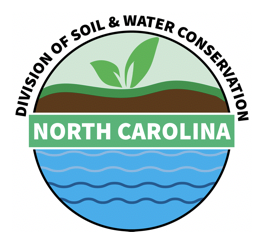NC Cost Share Programs
go.ncsu.edu/readext?820184
en Español / em Português
El inglés es el idioma de control de esta página. En la medida en que haya algún conflicto entre la traducción al inglés y la traducción, el inglés prevalece.
Al hacer clic en el enlace de traducción se activa un servicio de traducción gratuito para convertir la página al español. Al igual que con cualquier traducción por Internet, la conversión no es sensible al contexto y puede que no traduzca el texto en su significado original. NC State Extension no garantiza la exactitud del texto traducido. Por favor, tenga en cuenta que algunas aplicaciones y/o servicios pueden no funcionar como se espera cuando se traducen.
Português
Inglês é o idioma de controle desta página. Na medida que haja algum conflito entre o texto original em Inglês e a tradução, o Inglês prevalece.
Ao clicar no link de tradução, um serviço gratuito de tradução será ativado para converter a página para o Português. Como em qualquer tradução pela internet, a conversão não é sensivel ao contexto e pode não ocorrer a tradução para o significado orginal. O serviço de Extensão da Carolina do Norte (NC State Extension) não garante a exatidão do texto traduzido. Por favor, observe que algumas funções ou serviços podem não funcionar como esperado após a tradução.
English
English is the controlling language of this page. To the extent there is any conflict between the English text and the translation, English controls.
Clicking on the translation link activates a free translation service to convert the page to Spanish. As with any Internet translation, the conversion is not context-sensitive and may not translate the text to its original meaning. NC State Extension does not guarantee the accuracy of the translated text. Please note that some applications and/or services may not function as expected when translated.
Collapse ▲
North Carolina’s Division of Soil & Water Conservation’s mission is to foster voluntary, incentive-driven management of soil, water, and related natural resources for the benefit of the environment, economy, and all citizens. This mission is achieved through a unique delivery system of 96 soil and water conservation districts implementing the Agriculture Cost Share Program (ACSP) to improve water quality; Community Conservation Assistance Program (CCAP) to improve water quality from non-agricultural land use; Conservation Reserve Enhancement Program (CREP) to improve water quality and enhance wildlife habitat; and the Agricultural Water Resources Assistance Program (AgWRAP) to enhance and increase agricultural water quantity and efficiency. AgWRAP and ACSP may be of most interest to you and can help achieve your production and conservation goals.
AGRICULTURE COST SHARE PROGRAM (ACSP)
This program is open to any landowner or renter of an existing agricultural operation that has been operating for more than three years where a water quality problem exists and is willing to install a best management practice (BMP) to improve water quality. You must contact your local soil and water conservation district and work with them to apply to participate in the program. If your application scores high enough to warrant funding, you can receive up to 75% of a predetermined average cost for each BMP installed. Of the 80 BMPs, these may be the most helpful to your operation:
- Agrichemical Pollution Prevention Measures, which are used to ensure efficient chemical delivery, and include Agrichemical Containment and Mixing Facilities, Handling Facilities and Chemigation, and Fertigation Backflow Prevention.
- Erosion/Nutrient Management Measures, which are used to reduce soil erosion and nutrient runoff as well as improve soil health. These practices include Critical Area Plantings and Cropland Conversion.
- Sediment/Nutrient Management Measures, which are used to prevent sediment and nutrient delivery to watercourses and include Field Borders.
AGRICULTURAL WATER RESOURCES ASSISTANCE PROGRAM (AGWRAP)
This program is open to any landowner or renter of an existing agricultural operation that has been operating for more than one year, meets income qualifications, and has a water storage or efficiency need. Similar to the ASCP, if you are interested in AgWRAP, you need to work with your local district to submit either a district application or a Regional Application, which is used to fund larger, more expensive, and complex BMPs. Cost-share rates are also at 75% up to an allotted cap. Of the 8 BMP, these may be the most helpful your operation:
- Agricultural Water Supply Ponds, which allow for the construction of ponds for irrigation and other agricultural uses.
- Water Supply Wells, which allows for the construction of a drilled, driven, or dug well to supply water for irrigation including chemigation and fertigation, freeze protection, or on-farm processing.
- Conservation Irrigation Conversions, which allows for the modification of an existing irrigation system to increase the efficiency and uniformity of irrigation water application.
To find out more about the Cost Share Programs and how they can help you achieve your conservation goals, please contact your local district.


